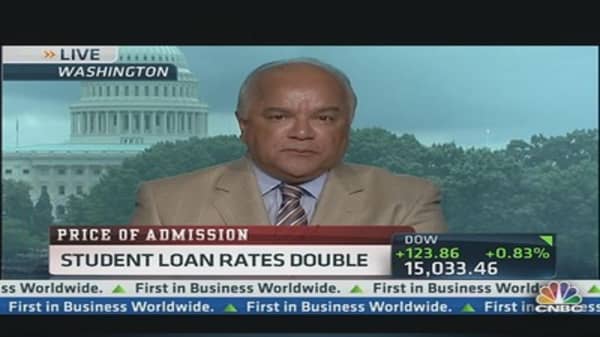Students scrambling to find an alternative to government-subsidized student loans that recently got a lot pricier may not want to waste too much time on the effort.
Even at the higher interest rate that recently kicked in, a subsidized Stafford loan is still one of the best deals around, experts say.
"If that person looks for a loan on the private market, they're often not going to find anything close," said Heather Jarvis, an attorney and student loan expert.
The Senate failed again Wednesday to strike a compromise to temporarily keep the rates on the loans from doubling to 6.8 percent. Some lawmakers are pushing for a long-term plan that would tie student-loan rates more closely to market rates. That could potentially save the government money.
(Read More: What New Student Loan Rates Mean for You)
Unless a deal is reached, students taking out new loans will pay the higher interest rate.
That has left students, such as Kelly Binns, in a difficult spot.
Binns, 19, is relying on student loans, a small scholarship, help from her parents and income from a summer nanny job to finance her degree in history from Colorado Mesa University in Grand Junction, Colo. She also is completing a concentration in secondary education and hopes to be a teacher.
Binns used subsidized Stafford loans last year and plans to use them again this year, despite the rate increase.
Though she doesn't want to pay more, she's also finding it tough to snare any more scholarship money, and her student aid office has advised her that adding private student loans might not make financial sense.
(Read More: A Weak Economy Means Fewer Babies)
Binns hopes she can find a job during the school year to help offset the high cost of getting an education.
"It kind of was a shock to me, how much college is costing now," she said.
Many students and their parents have suffered sticker shock at the costs associated with getting a four-year degree. As the price tag for college has risen, student loan debt has ballooned to about $1 trillion by some estimates.





